Ferodo Racing Front Brake Pads FCP1063 For BMW 3 Convertible (E93) 325 i 2006+
195,36€ WITH TAX
Ferodo Racing Front Brake Pads FCP1063 For BMW 3 Convertible (E93) 325 i 2006+
Compatable With: LUCAS/TRW Calipers.
Ferodo Racing Front Brake Pads FCP1063 For BMW 3 Convertible (E93) 325 i 2006+ FCP1063H
Compatable With: LUCAS/TRW Calipers.
BRAKE PADS
Ferodo Racing has one of the widest ranges of pad shapes in the racing and high performance brake pad market. This fitment range is available with several compounds, the choice of which depends upon application and driver preference.
Each compound is identified by a specific suffix, e.g. compound DS2500-> suffix: H. The presence of “B” in the suffix (e.g. GB) indicates that the pad set has undergone a high temperature heat-soak in the production process to leave it much quicker to bed.
Compounds
DS2500 (H)

PRODUCT CODE: FRP/FCP****H
MAIN APPLICATIONS: Track day, light race use, Rear GT
MAIN FEATURES
• Road style refinement but with race material ability to withstand heat with respect to life and µ
• Applications: track day & light race use for all vehicle types
• Average friction coefficient of 0,41 over working temperature range of 0° - 500° C
WARNING: DS2500 DOES NOT HAVE R90 CERTIFICATION AND SO IT IS NOT RECOMMENDED FOR ROAD USE IN THOSE COUNTRIES WHICH REQUIRE R90
DSUNO (Z/ZB)

PRODUCT CODE: FRP/FCP****Z/ZB
MAIN APPLICATIONS: Rally, Rear GT, Formula, Track car with OE brakes
MAIN FEATURES
• Heavy duty semi-endurance material
• Very controllable torque output
• Very kind to discs
• Long life
• Applications: touring car, GT, single seat, rally
• Average friction coefficient 0.48 over working temperature range of 200°-750°C
WARNING: DSUNO IS NOT SUITABLE FOR ROAD USE
TL66 (TL66)

PRODUCT CODE: FRP****TL66
MAIN APPLICATIONS: GT, Rally, TC, Formula, heavy duty track use
MAIN FEATURES
• High friction coefficient and high initial bite, similar to DS3.12 but with less torque build-up during the stop for enhanced controllability
• ABS compatible
• Together with DS3.12 it has the longest pad life of the Ferodo Racing range under heavy duty track use
• Applications: recommended for track use on larger vehicles with ABS such as GT4 and GT3 and also works well in rally
• Reproducible and stable performance up to 800°C under all pressure and speed conditions
• It has been used at the Nürburgring and SPA 24 hour events
WARNING: TL66 IS NOT SUITABLE FOR ROAD USE
FER4003 (C)
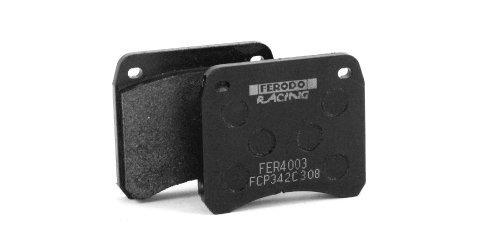
PRODUCT CODE: FRP/FCP****C
MAIN APPLICATIONS: Formula, Rear TC
MAIN FEATURES
• Light/medium duty race material specifically for Formula cars, occasional rally
• Very short bedding time
• Excellent bite
• Low drag and excellent release
• Offers control to avoid wheel lock when downforce reduces
• Average friction coefficient 0.46 over working temperature range of 100° - 550° C
WARNING: FER4003 IS NOT SUITABLE FOR ROAD USE
TL180

PRODUCT CODE: FRP****TL180
MAIN APPLICATIONS: GT, heavy duty track use
MAIN FEATURES
• Highest friction coefficient in Ferodo’s heavy-duty range
• ABS compatible
• Reduces disc peak temperatures
• Applications: recommended for track use on heavy high-powered cars such as GT3, GT2, sprint and endurance duration races
• Reproducible and stable performance up to 850°C under all pressure and speed conditions
WARNING: TL180 IS NOT SUITABLE FOR ROAD USE
DS3.12 (G/GB)

PRODUCT CODE: FRP/FCP****G/GB
MAIN APPLICATIONS: GT, V8, Stock Car, heavy duty track use
MAIN FEATURES
• High friction coefficient and high initial bite
• ABS compatible
• Applications: recommended for track use on larger vehicles with ABS such as GT4 and GT3, sprint and medium duration races (up to 6 hours)
• Reproducible and stable performance up to 850°C under all pressure and speed conditions
WARNING: DS3.12 IS NOT SUITABLE FOR ROAD USE
DS1.11 (W/WB)

PRODUCT CODE: FRP/FCP****W/WB
MAIN APPLICATIONS: Formula, Rear TC-GT, Track car with OE brakes
MAIN FEATURES
• Heavy duty endurance material
• Long life
• Very kind to discs
• Applications: touring car, GT, single seat
• Average friction coefficient 0.46 over working temperature range of 200°-750°C
WARNING: DS1.11 IS NOT SUITABLE FOR ROAD USE
DS3000 (R)

PRODUCT CODE: FRP/FCP****R
MAIN APPLICATIONS: TC, Rally, Formula, Track car with OE brakes
MAIN FEATURES
• Heavy duty all-round material choice
• Short bedding time
• Applications: touring car, rally, Group N, single seat, hill-climb
• Average friction coefficient 0.48 over working temperature range of 200°-650°C
WARNING: DS3000 IS NOT SUITABLE FOR ROAD USE
TL163

PRODUCT CODE: FRP****TL163
MAIN APPLICATIONS: Rear GT & Touring cars
MAIN FEATURES
• TL163 replaces DB
• Low friction coefficient with very flat torque profile
• ABS compatible, minimizing wheel lock-ups and excessive slip towards the end of the stop
• Applications: recommended for track use on rear calipers
• Reproducible and stable performance up to 750°C under all pressure and speed conditions
WARNING: TL163 IS NOT SUITABLE FOR ROAD USE
COMPOUND COMPARISON
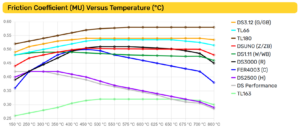



DISCLAIMER
Ferodo brake pads citing race or racing on their packaging are solely developed for motorsport use. They are intended for race use only. They have not been developed for use on public roads and must not, under any circumstances, be used on public roads. The nature of racing prevents Federal Mogul from warranting or guaranteeing any aspect of the behavior or performance of the brake pads, specifically because motorsport is inherently dangerous and the use of Ferodo racing brake pads in motorsport results in inherent strains and uses over which Federal-Mogul has no control.
Federal-Mogul warrants only that the Ferodo racing brake pads have been manufactured in accordance with the manufacturing specifications and design for such pads.
In particular, and without in any way limiting the scope of the foregoing disclaimer, no warranty or guarantee, express or implied, is made as to the ability of the Federal-Mogul racing brake pads to protect the user from injury or death. By the usage of such racing brake pads the user explicitly assumes all said risks.
FURTHER TO THE FOREGOING, EXCEPT FOR THE EXPRESS WARRANTY GIVEN IN THE RESPECT OF CONFORMITY OF THE RACING BRAKE PADS TO THE MANUFACTURING SPECIFICATIONS, FEDERAL-MOGUL DISCLAIMS ANY AND ALL WARRANTIES Of ANY KIND, INCLUDING WITHOUT LIMITATION, ANY IMPLIED WARRANTIES OF MERCHANTABILITY OR FITNESS FOR A PARTICULAR PURPOSE.
All test results above are based on various internal and external performance and driving tests including specific personal recommendations by experienced test drivers.
FEATURES AND BENEFITS
ISO16949 & 14001 Certified Production
All Ferodo Racing brake pads are manufactured to the highest international ISO quality standards at Federal Mogul’s dedicated manufacturing facility in Italy. Every brake pad has a total of 26 separate quality controls during its manufacture which guarantee a repeatable and consistent product within and between every batch.
Precision Engineering
All of the pad back-plates are manufactured from high tensile steel meaning minimum distortion when subjected to the high clamping forces common in motorsport use. Pads are manufactured to maintain high tolerances on the pad and back-plate dimensions including: flatness, parallelism and overall thickness. This results in a rapid and uniform transmission of pressure from the brake system to the pads.
Thermal Under-layer
Unlike many competitive products most Ferodo Racing brake pads incorporate a thermal under-layer between the backing-plate and the friction material. This reduces the brake caliper’s operating temperature by up to 80 deg C and significantly reduces the risk of boiling the brake fluid which causes a “spongy” feeling in the pedal.
Disc Friendly
Unlike many competitive products Ferodo pads are kind on brake discs. Ferodo pads are developed to optimize both the pad and disc life. Our philosophy is not to increase pad life with the casualty of excessive disc wear.
High Controllability
All Ferodo Racing brake pads are engineered to perform with a relatively constant coefficient of friction (mu) across a wide range of temperatures, pressures and vehicle speeds. This results in a consistent brake feel for the driver meaning that the braking torque is a linear response to pedal pressure.
Wide Range of Material choices and Fitments
Ferodo Racing has one of the widest range of pad shapes in the racing/performance brake pad market. This fitment range is available with the necessary compound choice meaning that there is nearly always a solution to your needs.
PAD BEDDING
The aim of bedding is to bring the pads to full race temperatures, but gradually; too quickly results in glazing. It is important that the pads are allowed to cool between the bedding and racing, but if time does not allow, they can be used immediately though less product life - possibly 10% - should be expected.
HOW TO DO THE BEDDING
Perform at least 15 trial brake applications, initially with reduced pressures (around 50% of the normal that might be used for that same brake application were it to occur under race conditions) building up to full decelerations after the 15 applications. To shorten the procedure applications can be made along the straights as well as at corners.
Ideally the pads will arrive at temperatures in excess of 500°C during the bedding.
Pads whose part number includes the suffix WB, ZB, GB, TL180, DB, FB have undergone an intense thermal treatment up to full bedding temperatures during their production. In this case the same general procedure above is to be applied but arriving at the 500°C target temperature is not critical. The number of applications may also be reduced. In these thermally treated compounds, bedding is required only as mechanical mating of pad and disc.
Pads smoking during the cool-down is not a cause for concern. Specifically for DS1.11, DS3.12 and DSUNO temperatures should arrive at between 500°C and 700°C (as an indication: green thermal paint applied to discs should completely change and from half to all of the orange paint should change.).
It may be necessary to close cooling ducts during the bedding to achieve sufficiently high temperatures.
On completion of the trial applications, return to a service point and let the pads cool and then inspect the surface of the brake pads from the two wheels that have been working the hardest. There should be evidence of contact over at least 80% of the pad area, but without glazing.
The pads are now ready to race.
Whilst it is recommended that pads are inspected after bedding, time may not allow this. But as long as the gradual build-up procedure has been carried out correctly and a short period of time has elapsed to allow the brake system to cool (ideally to below 100°C - this might take in excess of five minutes), the pads will be ready to race.
To illustrate these principles please consider the figures below:
Figure 1: data from a GT3 car during bedding
Figure 2: data from the same car under race conditions (same circuit)
Red plot: brake pressure against time; Green plot: disc temperature against time
Red plots: brake pressures during the bedding-in cycle at around 50% of those seen in race conditions. The gradual build-up of temperature during the bedding can be seen peaking at 580°C, which is quite close to the full race temperature.


Figures 3 and 4 below illustrate the appearance of DS3.12 pads that have been properly bedded-in. The pad surface is even, with a dull sheen.

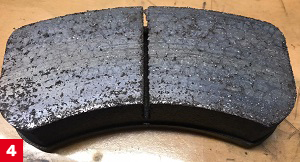
Figure 5 – Example of DS3.12 pad that has not been properly bedded. In this case the final disc temperatures reached were not sufficient and/or insufficient applications were made to allow mechanical mating. In this case pad surface has a non-uniform appearance and these streaks may have a glassy appearance.
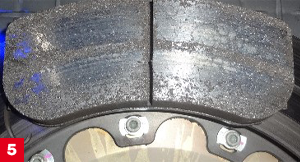
| Product manufacturer | FERODO |
|---|---|
| Brand | Brakes |
| Car brand | BMW |
| Ferodo Car Model | 3 CONVERTIBLE (E93) |
| Ferodo Car Engine | 325 I |
| Car year | 2006+ |
| Car Year Start | 2006-10-01 |
| Car Year End | – |
| Position | Front |
| ccm | 2996 |
| Pieces per set | 4 |
| Ferodo KW | 155 |
Only logged in customers who have purchased this product may leave a review.
Related products
-5%
-5%
-5%
-5%
-5%
-5%
-5%
-5%








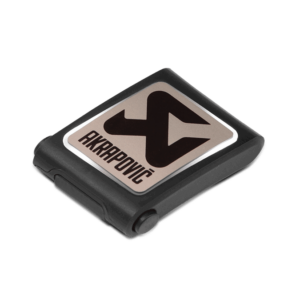
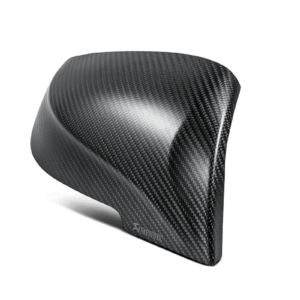

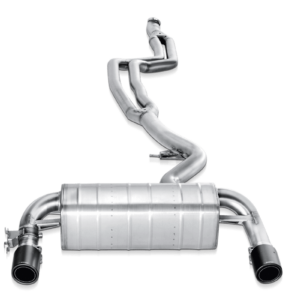
Reviews
There are no reviews yet.